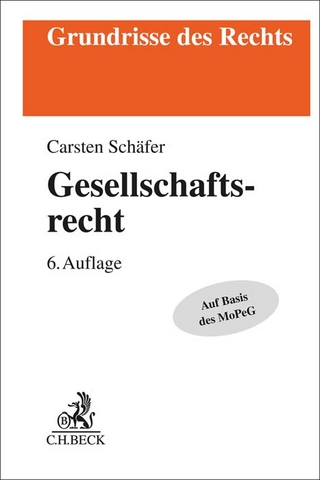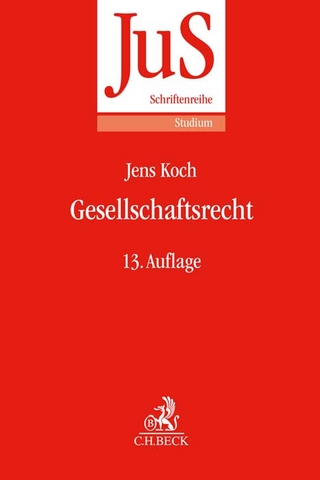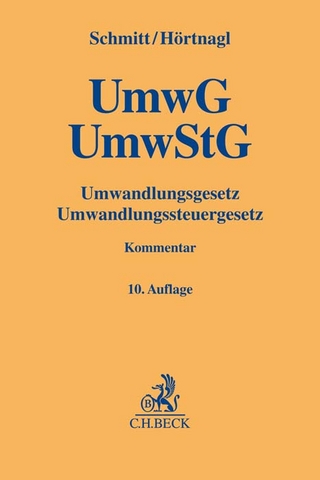
Effective Trusts
Globe Law and Business Ltd (Verlag)
978-1-78742-881-2 (ISBN)
Preventing a fire is substantially less costly than fighting one. Identifying and appreciating the potential causes of trust disputes puts settlors, trust officials and beneficiaries in the best position to prevent a dispute from developing or accelerating.
This Special Report examines the causes of trust disputes and explores the steps that settlors, trustees, beneficiaries and others can take during each stage of a trust’s lifecycle – design, execution, administration and termination – to reduce the risk of sparking a dispute. Supported by real world experience and input from leading international trust practitioners, including estate planners, general counsel and experienced trust litigators, this Special Report delves into key concepts such as:
thoughtful design of a trust’s governance;
incorporating flexibility and adaptability into a trust structure;
the need for constructive communication and engagement between fiduciaries and beneficiaries;
practices and procedures trust officials should consider implementing in trust administration; and
how trustees and beneficiaries can avoid adding fuel to the fire once a dispute arises.
The authors also examine the benefits of involving different perspectives, including those of experienced trust litigators, at various stages of the trust’s lifecycle, and offer practitioner insight into the measures and approaches both fiduciaries and beneficiaries should consider taking when a dispute first presents itself.
Filled with real-world practitioner guidance, perspective and insight on issues of critical importance to fiduciaries, trust officials and beneficiaries alike, this Special Report is essential reading.
Acknowledgements 7
I. Introduction 9
1. Trends in trust disputes 10
1.1 Deep fakes and the metaverse 10
1.2 Family office conflicts 10
1.3 Compliance-driven conflict, litigation and court activity 11
2. Common causes of trust disputes 12
2.1 Poor drafting 12
2.2 Communication failures 14
2.3 Lack of education 15
2.4 Disenfranchisement 16
2.5 Appointment of the wrong trust officials 16
2.6 Diminished capacity (including undue influence) 19
2.7 Challenges of recollection 22
3. Our approach 22
II. Trust dispute avoidance through design 23
1. Managing the settlor’s expectations 23
2. Good drafting 24
3. Creating the appropriate governance structure 27
3.1 Checks and balances 27
3.2 Selecting the right person for each role 30
3.3 Beneficiary committees 36
3.4 Qualifications 36
3.5 Fiduciary versus non-fiduciary capacity 39
3.6 Term limits 39
3.7 Age limits 40
3.8 Designing the right process for succession (appointment and removal) 41
3.9 Compensation 41
3.10 Sharing information 44
3.11 Avoiding co-trustee dysfunction 44
4. Communicating with the beneficiaries (or not): the duty to inform and the use of quiet trusts 47
5. Incorporating flexibility and adaptability into the trust 50
5.1 Power to add and remove beneficiaries 51
5.2 Variation or modification 53
5.3 Decanting 53
5.4 Changing situs 54
5.5 Changing governing law 54
5.6 Termination 55
6. Selecting appropriate liability and evidentiary standards 55
7. Using no-contest or forfeiture provisions to discourage disputes 56
8. Incorporating processes for non-judicial dispute resolution 57
9. Getting the litigator’s perspective during the drafting process 59
10. ‘Failure mode and effects analysis’: early detection of potential issues and warning signs 66
III. Minimising trust disputes through thoughtful execution 69
1. Family dynamics redux 69
2. Witnesses 70
3. Presence of individuals other than the settlor and witnesses 72
4. Self-imposed formalities 72
5. Lifetime approval of trusts 73
IV. Administration: deploying best practice and procedures 75
1. Follow the terms of the trust 76
2. Engage proactively 76
3. Communicate with the beneficiaries 77
3.1 Ongoing due diligence 77
3.2 Proactive trust accounting 79
4. Maintain good records 80
4.1 Retention practices and policies – the ‘hit by a bus’ scenario 80
4.2 Trustees and other trust officials 80
4.3 Distributions 81
4.4 Investments 82
4.5 Conflict transactions 83
4.6 Compensation 83
4.7 Taxes 84
5. Evaluate the trust and administration regularly 84
5.1 What has changed? 85
5.2 Would a change of situs be better for the trust? 86
5.3 Is modification (variation) or decanting warranted? 87
5.4 Should the trust be divided into separate trusts? 87
5.5 Are the right people (still) in the right roles? 89
5.6 Is your reliance on outside guidance (still) reasonable? 89
5.7 Are the trust officials working together effectively? 91
6. Evaluate the trust and administration when an issue arises (or maybe not) 92
7. Utilise experienced litigators outside of litigation 92
7.1 The devil’s advocate: having a litigator review proposed changes 95
V. Reducing the risk of disputes at termination 97
1. Releases, judicial accountings and indemnification 98
2. Providing information 102
3. Termination fees 104
4. Transferring assets 104
VI. Managing trust disputes 107
1. Avoid exacerbating the problem 107
2. Maintain open lines of communication 110
3. Taking a thoughtful position 111
4. Preserving lawyer–client privilege 115
5. Litigation management 116
6. Advice for beneficiaries when a dispute arises 118
VII. Conclusion 121
Notes 122
About the authors 129
About Globe Law and Business 131
| Erscheinungsdatum | 28.07.2022 |
|---|---|
| Verlagsort | London |
| Sprache | englisch |
| Maße | 210 x 297 mm |
| Themenwelt | Recht / Steuern ► EU / Internationales Recht |
| Recht / Steuern ► Wirtschaftsrecht ► Gesellschaftsrecht | |
| ISBN-10 | 1-78742-881-8 / 1787428818 |
| ISBN-13 | 978-1-78742-881-2 / 9781787428812 |
| Zustand | Neuware |
| Haben Sie eine Frage zum Produkt? |
aus dem Bereich


